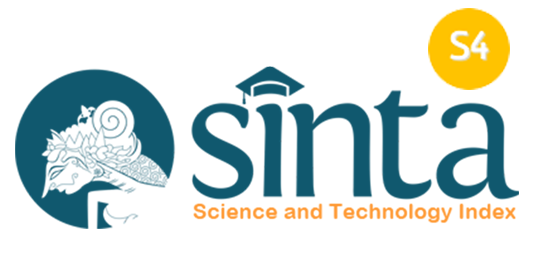Analysis of Individual Health Behaviors in Relation to Cardiovascular Disease Prevention among Employees of an Oil and Gas Company
Case Study Employees of an Oil and Gas Company
DOI:
https://doi.org/10.23917/benefit.v10i1.8378Keywords:
Individual health behavior, Health belief model, individual perceive, occupational health, cardiovascular riskAbstract
Deaths from heart disease among employees in the upstream oil and gas industry are a serious concern. Companies in these risky and costly environments need to better manage workplace health to meet their goals and follow regulations. This study aims to examine the influence of Health Belief Model variables—including socio-demographics, knowledge, perceived susceptibility, severity, barriers, benefits, self-efficacy, and cues to action—on individual health behaviors in preventing cardiovascular disease. Data was collected through a questionnaire from 129 respondents in an oil and gas company using purposive sampling. Descriptive analysis and SEM-PLS show that knowledge significantly influences perceived susceptibility, severity, benefits, and self-efficacy, while the variables of perceived susceptibility, benefits, and cues to action impact individual health behavior. These results indicate the need for comprehensive education programs and effective communication. Furthermore, the non-significant influence of barriers, severity, and self-efficacy suggests the need for identifying barriers and supportive work environment strategies. A systematic approach involving psychological, environmental, and social factors is also important to improve employee health, productivity, and overall well-being.
Downloads
References
Amraei, S. G., & Malekshahi, F. (2020). Using an educational program based on health belief model to improve the preventive behaviors of nurses against cardiovascular diseases. Journal of Education and Health Promotion, 9:100.
Champion, V. L., & Skinner, C. S. (2008). Health Behavior and Health Education: Theory, Research, and Practice. Pennsylvania: University of Pennsylvania.
Dessler, G. (2018). Human Resource Management, 16th edition. New York: Pearson Edication, Inc.
Hair, J. F., Hult, G. T., Ringle, C. M., & Sarstedt, M. (2014). A Primer On Partial Last Square Structural Equation Modeling (PLS-SEM). United States of America: SAGE.
Hanoum, S. (2021). Manufacturing enterprise performance using network DEA: a profitability and marketability framework. International Journal of Business Excellence, 25(3), 277-299.
Hanoum, S., & Islam, S. M. (2021). Linking performance measurements and manufacturing process improvements: the two-stage analytical framework. International Journal of Process Management and Benchmarking, 11(4), 542-564.
Jones, C. L., Jensen, J. D., Scherr, C. L., Brown, N. R., & Weaver, J. (2015). The Health Belief Model as an Explanatory Framework in Communication Research: Exploring Parallel, Serial, and Moderated Mediation. Health Commun, 30(6): 566–576.
Julianti, L. (2020). Analisis Faktor Yang Memengaruhi Kepatuhan Perilaku Pencegahan Penularan Dan Kepatuhan Minum Obat Pada Pasien Tuberkulosis Paru Berbasis Teori Health Belief Model, Tesis . Surabaya: Universitas Airlangga.
P2PTM Kemenkes, R. (2021, Juli 21). Apa saja faktor risiko yang menyebabkan penyakit jantung? Diambil kembali dari Website Kemenkes. Direktorat Pencegahan dan Pengendalian Penyakit Tidak Menular: https://p2ptm.kemkes.go.id/
Rachmad, R., Irawan, M. I., & Hanoum, S. (2024). Economic Strategies and Efficiency of Power Plants in Indonesia to Achieve Net Zero Emissions. International Journal of Energy Economics and Policy, 14(6), 213-221.
Rai, N. G. M., Silmina, N., Fitrananda, H., Hanoum, S., Sinansari, P., & Noor, B. A. (2021, December). The Effect of work Conflict and Job Stress on The Human Resources Performance (Case Study: Maintenance & Engineer Division at PT. Paiton Operation & Maintenance Indonesia). In 3rd International Conference on Business and Management of Technology (ICONBMT 2021) (pp. 305-309). Atlantis Press.
Robinson et al., R. (2019). Perceived Risk of Cardiovascular Disease and Health Behaviors in Black College Students. J Best Pract Health Prof Divers, Vol 12 No. 1, 24–45.
Saputra, A. Y., & Erwandi, D. (2023). Identifikasi Faktor Resiko Distress dan Program Penanggulangan Penyakit Kardiovaskuler di Tempat Kerja. Jurnal Kesehatan Tambusai, Vol 4, No 2.
Thagizadeh, A., Ghahramanian, A., Zamanzadeh, V., Aslanabadi, N., Onyeka, T., & Ramazanzadeh, N. (2022). Illness perception and cardiovascular risk factors in patients with myocardial infarction undergoing percutaneous coronary intervention. BMC Cardiovascular Disorders, 22:245.
Tjahyadi, R., Magdalena, N., & Vina, L. (2022). Pengaruh Kampanye Pemasaran Sosial Pada Niat Perubahan Perilaku Masyarakat: Demografi sebagai Variabel Moderasi. Jurnal Ekonomi, Keuangan, Investasi dan Syarieh (EKUITAS), Vol. 4, No. 2, Hal 390-396.
Umiyati, H., Nugroho, H., Anwar, K., Silaen, N., & Priatna, I. (2020). Manajemen Sumber Daya Manusia dalam Organisasi. Bandung: Widina Bhakti Persada.
Downloads
Submitted
Accepted
Published
Issue
Section
License
Copyright (c) 2025 Benefit: Jurnal Manajemen dan Bisnis

This work is licensed under a Creative Commons Attribution 4.0 International License.










